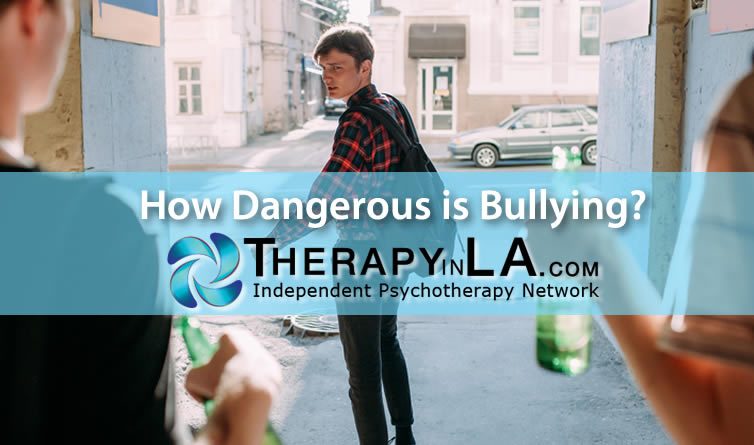How Dangerous is Bullying
How Dangerous is Bullying?
Teenagers who are bullied are at much greater risk of making a suicide attempt. It is critical that mental health professionals, and parents, actively inquire into this issue, rather than minimize it as a typical part of being an adolescent (especially middle school). A news release from the American Psychiatric Association announced an upcoming article in the Journal of the American Academy of Child and Adolescent Psychiatry.
Suicide is the third-leading cause of mortality among teenagers around the world. About 67,000 youngsters die this way each year.
This study, done at the University of Barcelona in Spain, collected data from 134,000 adolescents from 12-15 years old from 48 countries, mostly at low to middle income levels. They asked about bullying in the past 30 days, as well as suicide attempts in the previous 12 months.
Close to 30% of the students reported being bullied, and almost 11% reported a suicide attempt. There was a strong correlation between bullying victimization and suicide attempts; Samoa, which had the highest occurrence of bullying (74% of kids reported this) also had the highest number of suicide attempts (61% reported).
More specifically, if a child was bullied at least one day in the past month, there was a “threefold higher risk for a suicide attempt”. As bullying occurred on more days, the risk of a suicide attempt also increased. If there were no bullying incidents the rate of suicide attempts in the previous year was 6% of the kids (which seems very substantial), but if a child was bullied “20 to 30 days a month”, the suicide attempt rate spiked to 33%.
The study concludes: “Efforts to reduce bullying especially at school may be fundamental to prevent or reduce adolescent suicides. With respect to victims of bullying, it has been suggested that interventions to enhance coping and problem-solving skills, increase social connectedness, improve conditions within the home, and cultivate inclusive and safe environments/spaces in schools may be effective. Mental health practitioners should consider bullying as an important potential risk factor for suicide attempts.”
This practitioner has found that interventions at the school site are often most effective, not only with the victim of bullying, but with the bully as well. Many of these children (both victims and bullies) have experienced trauma in their home and/or community that needs help.
Alan M. Solomon, Ph.D. is a clinical psychologist in private practice in Torrance, CA. A member of the Independent Psychotherapy Network, he can be reached at 310 539-2772 or dralanms@gmail.com
Copyright 2019 by Alan M. Solomon, Ph.D.

